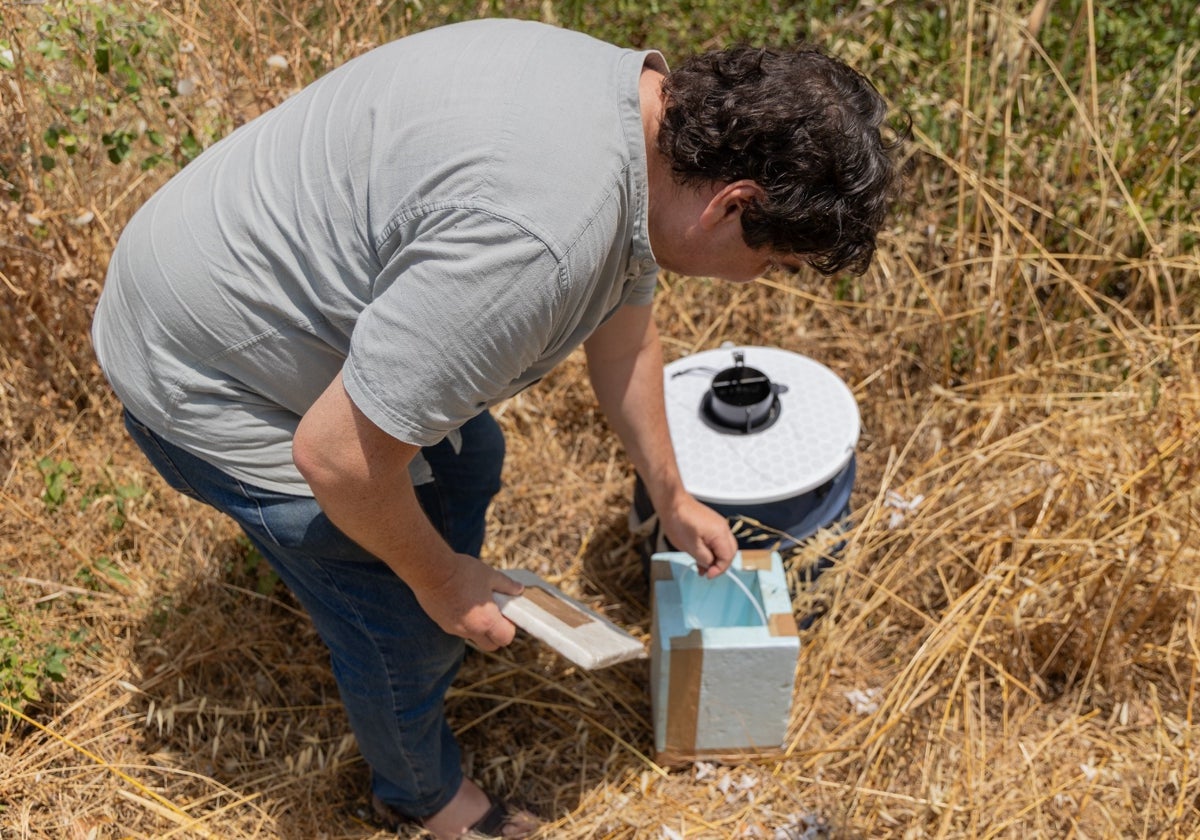West Nile Virus in Malaga: how many infected people are there and where are mosquito traps set in the province?
The Junta de Andalucía regional government has warned that no municipality can be considered exempt from the risk of circulation of the disease
The Junta de Andalucía's ministry of health has carried out more than 1,100 actions to control the spread of the West Nile Virus - an infectious disease that is transmitted mainly by mosquito bites. Most of those infected either have no symptoms or only mild ones, but a very small proportion can suffer from the disease more seriously, especially if the virus affects their brain. Those over 60 years of age with chronic illnesses are the biggest risk group. According to the regional government, only four people were infected in Malaga province in 2024 and none so far in 2025.
As president of the Spanish society of infectious diseases and clinical microbiology (SEIMC) Dr Francisco Javier Membrillo has stated, there are more cases of this tropical virus in Andalucía every year. "We must bear in mind that we are only seeing the tip of the iceberg, as most of the cases are asymptomatic or mild, which probably means that only serious cases get to hospitals, especially in western Andalucía, although also increasingly in the north. Climate change, the increase in temperatures in recent years and the spring rains this year are all conditions that favour a summer with lots of mosquitoes and transmission of the virus," he said.
In Malaga province, a total of six outbreaks among the horse population were declared in 2024 out of a total of 59 in Andalucía: 25 in Seville, 10 in Cadiz, eight in Jaén, six in Malaga, five in Huelva, four in Granada and one in Cordoba.
In addition, in March this year, the Junta launched the integrated surveillance and vector control programme for the West Nile Virus. Within the framework of this prevention plan, it placed six traps in the province in June, specifically in Antequera, Archidona, Campillos, Cártama, Fuente de Piedra and Malaga.
118 West Nile virus cases in Andalucía during 2024
according to data from the regional ministry of health
In Seville and Cadiz - the most affected provinces - 48 and 20 traps will be set up this year, respectively. However, entomological monitoring points have also been set up in Almeria (three), Cordoba (four), Jаén (three), Granada (four) and Huelva.
By the end of 2025, a total of 120 traps are expected. After five weeks of sampling, the virus has only been found in Almeria, which led to the declaration of two alert zones. Regarding the density of mosquitoes, the data shows average values somewhat lower than those found in June 2024, with no positive results in birds or horses. A weekly or fortnightly collection is carried out and the captured species are investigated with a PCR analysis.
Last year, 118 cases of the West Nile Virus were reported in Andalucía, concerning all provinces except Granada and Almeria. Seville was the most affected, with 93 cases. The data indicated that the virus is increasingly spreading.
The Junta has activated 400 public health officers to advise and technically support municipalities, as all of Andalucía has been at some level of risk (low, medium or high), since the beginning of the season. To date, some 1,116 actions have been carried out in 779 Andalusian municipalities and 75% of those at high risk have a municipal vector surveillance and control plan in place. At high risk in Malaga province are Alhaurín de la Torre and Alhaurín el Grande, Almargen, Antequera, Cártama, Coín, Guaro, Malaga city and Pizarra.
Francisco Javier Membrillo, head of infectious diseases at the Hospital Gómez Ulla in Madrid
Health officers evaluate the municipal mosquito control plans, report on aerial larvicide spraying and act in case of incidents or if the risk level changes. In 2024, 124 Andalusian municipalities had a risk level two or higher.
In addition, all primary healthcare centres in municipalities at high risk have a working group consisting of nurses, epidemiologists, health protection professionals and promotion technicians. Throughout the region, there have been 194 sessions in educational centres to raise awareness among students; 85 community interventions, 72 awareness-raising actions with healthcare professionals and 17 with non-healthcare professionals.
The regional ministry of health also carries out advisory and verification activities, as well as theoretical and practical training, in which 390 professionals have participated.
Improving the predictive model
The Junta has also improved the predictive model for assessing the risk of virus circulation. "The first consequence of this model is that no Andalusian municipality can be considered exempt from the risk of virus circulation," says the Andalusian government.
In addition, since March 2025, Cadiz, Seville and other alert areas are keeping an eye out for mild cases in emergency rooms: headache, rash or both. A complete blood sample is taken to determine if the disease is circulating. So far, it has been ruled out in 91 cases.
There are two reference laboratories: the Hospital Virgen de las Nieves in Granada for eastern Andalucía and the Hospital Virgen del Rocío for western Andalucía. All 108 tests carried out so far have been negative.
On 106 occasions, compared to 42 in 2023, virus circulation was identified in mosquitoes, mainly in the cules perexiguus species but also in tiger mosquitoes.




Comentar es una ventaja exclusiva para registrados
¿Ya eres registrado?
Inicia sesiónNecesitas ser suscriptor para poder votar.